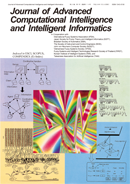Volume 19, Issue 4
Displaying 1-8 of 8 articles from this issue
- |<
- <
- 1
- >
- >|
Regular Papers
-
Article type: Paper
2015Volume 19Issue 4 Pages 491-499
Published: July 20, 2015
Released on J-STAGE: July 01, 2019
Download PDF (327K) -
Article type: Paper
2015Volume 19Issue 4 Pages 500-507
Published: July 20, 2015
Released on J-STAGE: July 01, 2019
Download PDF (889K) -
Article type: Paper
2015Volume 19Issue 4 Pages 508-513
Published: July 20, 2015
Released on J-STAGE: July 01, 2019
Download PDF (621K) -
Article type: Paper
2015Volume 19Issue 4 Pages 514-522
Published: July 20, 2015
Released on J-STAGE: July 01, 2019
Download PDF (3053K) -
Article type: Paper
2015Volume 19Issue 4 Pages 523-531
Published: July 20, 2015
Released on J-STAGE: July 01, 2019
Download PDF (1371K) -
Article type: Paper
2015Volume 19Issue 4 Pages 532-543
Published: July 20, 2015
Released on J-STAGE: July 01, 2019
Download PDF (2570K) -
Article type: Paper
2015Volume 19Issue 4 Pages 544-554
Published: July 20, 2015
Released on J-STAGE: July 01, 2019
Download PDF (770K) -
Article type: Paper
2015Volume 19Issue 4 Pages 555-566
Published: July 20, 2015
Released on J-STAGE: July 01, 2019
Download PDF (334K)
- |<
- <
- 1
- >
- >|
